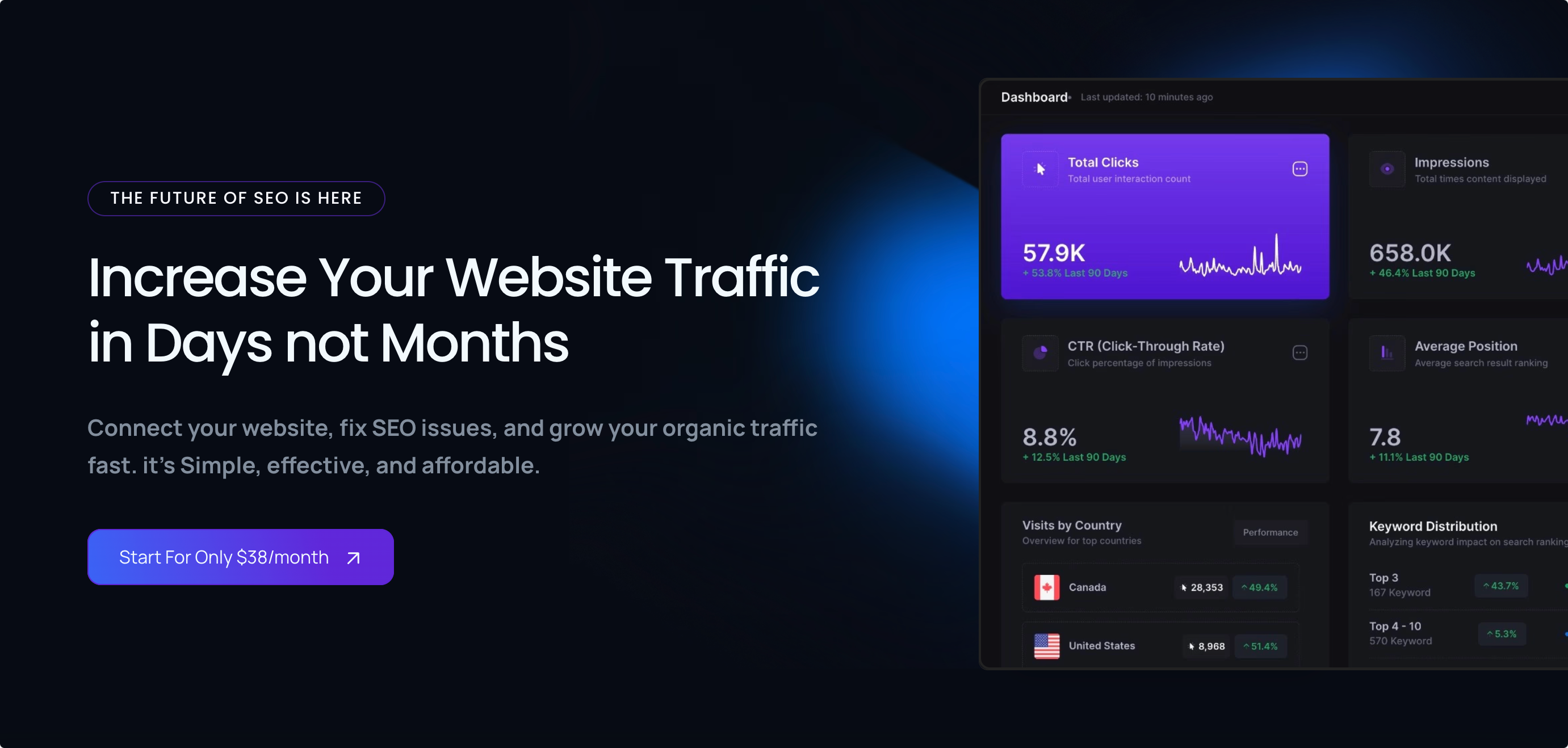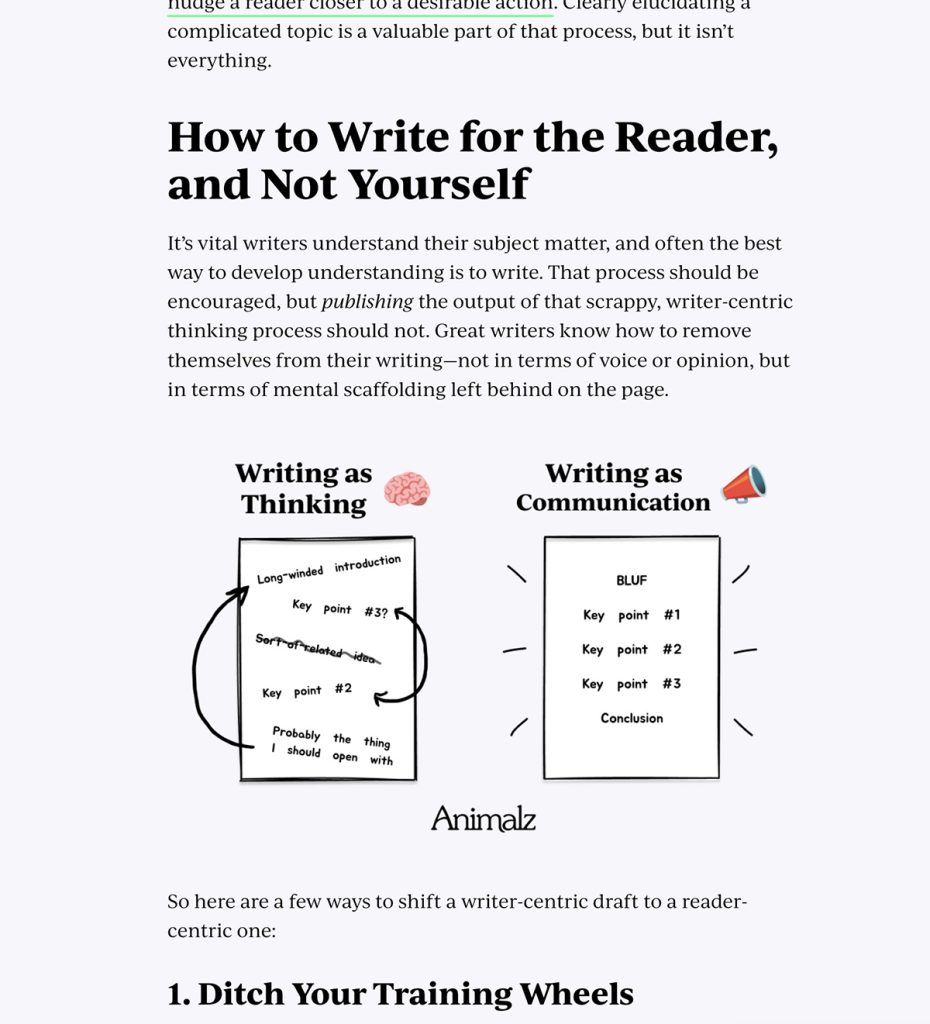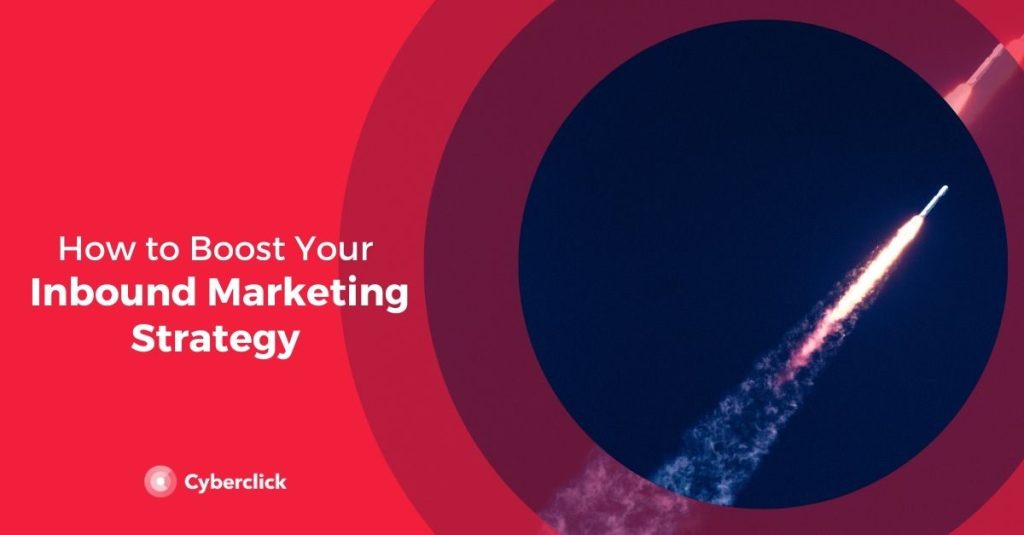Reading Time:
17 mins
Published:
Friday, 09 May

In the ever-evolving world of search engine optimization (SEO), content is still king, but content optimization has become the real game-changer. With millions of new pages hitting the web every day, simply publishing content isn’t enough. In fact, an estimated 7.5 million blog posts are published daily in 2025 Standing out in this content tsunami requires smart optimization at every level, from the text on the page to the title that appears in search results. Modern SEO is now all about aligning content with user intent, context, and relevance. This means tuning your articles, webpages, and especially your titles to match what searchers are looking for and what search algorithms favor.
One area that often yields surprisingly big wins in content optimization is the humble title tag. It’s just a short line of text, but it can have an outsized impact on whether your page gets seen and clicked. In this post, we’ll dive deep into why optimizing titles is so critical for SEO today. We’ll explore how a well-crafted title can boost your click-through rates (CTR) and even influence your search rankings. Most importantly, we’ll look at how AI SEO Tools like ClickRank are revolutionizing title optimization, making it easier than ever to generate and test effective titles at scale. We’ll share real-world examples (with data!) of how tweaking titles has lifted traffic, and how AI is helping digital marketers craft titles that attract more clicks without the guesswork.
Whether you’re a content marketer or an SEO specialist, this guide will show you why title optimization deserves your attention and how AI SEO tools can give you an edge – all in a friendly, informative way. Let’s get started!
SEO isn’t just about getting words on a page – it’s about making sure those words meet the needs of both users and search engines. Content optimization is the practice of refining your website’s pages so that they are highly relevant, valuable, and easily understood by search engines. This involves everything from keyword research and on-page SEO, to improving readability and ensuring the content thoroughly answers the questions users are asking. In modern SEO, quality and relevance of content have overtaken brute quantity. As one 2024 SEO outlook put it, “2024 will be about building content richness with a better understanding of how intent, context and relevance sculpt the search results. In other words, Google and other search engines now prioritize content that best aligns with the searcher’s intent and context, rather than just pages loaded with keywords.
Why is content optimization so crucial today? For one, the competition is fierce. With millions of pages on virtually every topic, search engines have their pick of content to show. Optimized content has a much better chance of rising above “average” content. Well-optimized pages tend to have clear structure, targeted keywords (used naturally), and up-to-date, trustworthy information – all signals that search algorithms use to rank results. Moreover, optimized content typically delivers a better user experience – it’s more readable, loads faster, and is more likely to satisfy the visitor. This in turn can lead to positive user engagement signals (like longer time on page or lower bounce rates), which can indirectly benefit SEO.
Perhaps the biggest reason content optimization matters is that search engines have gotten smarter. Advances in AI and natural language processing mean Google can understand context, synonyms, and intent better than ever. Old-school SEO tricks (keyword stuffing, generic content) are not only ineffective now, they can even hurt your rankings. Instead, you need to focus on comprehensive optimization: making sure each piece of content fully addresses a topic and is technically sound. That’s a lot of work – which is why many marketers are now turning to AI tools to assist in content optimization. In fact, a significant number of bloggers already use AI at various stages of content creation (43% for topic research, 29% to generate headlines, etc. These tools can help identify gaps, suggest improvements, and even automate parts of the optimization process.
In summary, content optimization is the cornerstone of modern SEO success. It ensures that your carefully crafted articles and pages don’t get lost in the noise, but instead rank well and attract your target audience. And among all the elements you can optimize on a page, one of the most impactful is the title tag. Let’s explore why titles are so important and how optimizing them can boost your SEO outcomes.
When it comes to on-page SEO elements, the title tag is arguably the most critical single line of text. The title tag (often simply called the page title or SEO title) is what search engines typically display as the clickable headline in search results. It’s also what appears at the top of your browser tab when the page is open. Despite its brevity, the title tag plays a dual role that is vital for SEO:
Relevance and Rankings: Search engines use the title tag as a key indicator of what your page is about. In fact, title tags carry significant weight in determining a page’s relevance to a query – Google considers them one of the primary factors for ranking. A well-optimized title helps search algorithms quickly understand your content’s topic and match it to appropriate search queries. Include one or two of your target keywords (organically and contextually) in the title, and you signal to Google that your page is a good candidate for those searches. Simply put, a good title can improve your chances of ranking higher by aligning with the terms people are searching for. Conversely, a poorly written or irrelevant title might cause your page to be overlooked by search engines, no matter how great your content is.
Click-Through Rate (CTR) and Traffic: Titles have a huge influence on whether users actually click your link in the search results. Think about your own behavior – when you search on Google, the first thing that catches your eye is the list of page titles in the results. If a title is compelling and clearly relevant to what you want, you’re far more likely to click it. It’s no surprise that title tags directly impact user engagement and CTR. A compelling, descriptive title acts as an advertisement for your page: it promises the answer or value the user is looking for, enticing them to click through. On the other hand, a vague or dull title might get skipped over even if it’s ranking on the first page. Higher CTR not only means more traffic, but there’s evidence it can have secondary SEO benefits. If users consistently prefer your result (high CTR) and stick around on your page, it’s a positive signal to Google that your content satisfied their intent, which can help maintain or even improve your rankings over time.
Getting the title right is therefore a one-two punch for SEO: it helps you rank and it helps you draw clicks. You can think of it as the bridge between your content and the potential audience. No matter how excellent your page content is, if the title doesn’t convince people to click, that content may never get seen.
Because titles are so influential, title optimization has become a key part of SEO strategy. Title optimization means crafting and fine-tuning your page titles to maximize their relevance and appeal. This involves a few considerations:
Keyword Alignment: Ensure the title includes the primary keyword or topic, so search engines and users can instantly tell what the page is about. For example, if you have a page about healthy smoothie recipes, a title like “10 Healthy Smoothie Recipes for Quick Breakfasts” is going to perform better than a generic title like “Yummy Drinks Galore”. The first one immediately conveys relevance for anyone searching for healthy smoothie recipes.
Clarity and Intent Matching: The title should accurately describe the content and match the intent of the target query. Misleading titles might get clicks, but visitors will bounce if the content doesn’t meet their expectations – and that can hurt your SEO in the long run. So honesty and clarity matter. If your page is a how-to guide, make sure the title indicates that (e.g., start with “How to…” or end with “Guide”). If it’s a list of tips, say so in the title.
Engagement and Uniqueness: Within the confines of about 50–60 characters, you want to make the title as enticing as possible. This might mean adding power words or adjectives (“Ultimate Guide”, “Essential Tips”, “2025 Update”, etc.) that make the title stand out. A bit of freshness or urgency can help – for instance, including the current year or phrases like “Step-by-Step” or “Checklist” signals that the content is up-to-date or easy to follow. The key is to capture attention without resorting to clickbait or sounding spammy. Remember, you’re trying to appeal to human searchers while staying relevant to the query.
Length and Formatting: A title tag should ideally be around 50–60 characters. Longer than that, and search engines may truncate it in results. Shorter is okay if it’s still descriptive. Also, avoid writing titles in ALL CAPS or with excessive punctuation – those can look like spam. Stick to a format that reads naturally (often Title Case or Sentence case is fine). According to Google’s own guidelines, unique, concise, and descriptive titles for each page are the goal.
Optimizing titles can yield quick wins. Unlike some SEO changes that take weeks or months to influence rankings, a title tweak can sometimes show impact almost immediately in terms of CTR. Real-world data confirms how powerful title optimization can be. For example, in one SEO case study a blogger updated the titles of several articles and saw CTR improvements ranging from +37% to +640% on those pages, even though their ranking positions remained roughly the same. The most successful title tweaks were making titles more concise, adding the current year, or using phrases like “Ultimate Guide” to convey completeness. In another instance, simply rewording a title tag to include a location drastically improved that page’s performance: the page jumped from an average position around 70 in Google to the top 3, and clicks per month skyrocketed from virtually zero to dozens, all from a title change. These examples show that the right title can unlock a page’s potential, turning it from practically invisible to a steady traffic driver.
However, finding that “right title” isn’t always straightforward. This is where AI is starting to play a transformative role. Let’s look at how AI-powered SEO tools are helping marketers optimize titles more systematically and effectively than ever.
Artificial intelligence has been a hot topic in SEO for a while, but in the last couple of years it’s gone from buzzword to practical assistant. AI is now helping with everything from keyword research to content creation. Specifically for content optimization, AI can analyze vast amounts of data (like search queries, user behavior, competitors’ content) to provide insights and recommendations that would be hard for a human to gather manually. For instance, AI-driven content tools can suggest what topics to cover, how to structure your article, and even detect content gaps or opportunities to improve on-page SEO elements.
When it comes to title optimization, AI is a game-changer. Crafting a perfect title is partly an art – knowing how to phrase things appealingly – and partly a science – knowing what keywords and length to use for SEO. AI can contribute to both sides:
Generating Title Ideas: AI language models (like GPT-4 and others) are very good at generating text. Give them a topic or a paragraph of your content, and they can come up with a plethora of title suggestions in seconds. This is incredibly useful when you have writer’s block on headlines. The AI can produce variations you might not have thought of, some more creative, some more keyword-focused, and you as the human editor can pick the best or refine them further. This speeds up the brainstorming process dramatically.
Data-Driven Recommendations: More advanced AI SEO tools don’t just generate titles blindly – they use data to back up their suggestions. For example, ClickRank.ai and similar platforms integrate with data sources like Google Search Console. They analyze which keywords your page is currently ranking for, which queries are bringing you impressions, and what the search intent behind those queries is. Then the AI suggests title revisions that align better with those high-impression keywords and the inferred intent. The idea is to tailor your title to what people are actually searching for. ClickRank’s tool, for instance, creates SEO-friendly titles guided by your top-performing keywords and search trends, This kind of insight-driven approach can uncover opportunities like adding a frequently-searched term to your title that you missed, or removing a word that isn’t resonating with searchers.
Predicting Performance (AI Forecasting): One particularly cool feature of some AI SEO tools is CTR and traffic forecasting. After suggesting a new title, the AI can predict how that change might impact your clicks or impressions. This prediction might be based on historical data or industry benchmarks. In ClickRank.ai’s case, their algorithm forecasts the increase in clicks and impressions for each title suggestion. While these are estimates, it’s incredibly useful to have a ballpark idea of which title option is likely to yield a better CTR. It adds a layer of confidence that “Option A might boost CTR by, say, +3% and Option B by +1.5%,” helping you prioritize which optimization to actually implement.
Automated Testing and Optimization: Traditionally, testing different titles on a page (to see which performs best) was tricky, because you can’t really A/B test title tags in Google’s live search easily – you typically have to change the title and wait to compare metrics over time. However, AI tools and some SEO platforms are starting to make this more feasible. For example, enterprise tools allow SEO A/B tests where a subset of pages use a new title and others remain with the old, to measure the impact. AI can assist by monitoring the performance after a title change and even automatically adjusting if the results are not as expected. We’re heading toward a future where AI might dynamically optimize titles based on real-time data – much like how online ads adjust headlines for better conversion. For now, even running iterative tests is much faster with AI doing the heavy lifting of analysis. Some news outlets have already begun A/B testing AI-generated headlines versus human-written ones, and the results are impressive: in one case, AI-generated headlines outperformed human ones in 46% of tests, resulting in a 59% higher overall click-through rate for the AI titles, That kind of lift in CTR can translate to a lot more traffic.
Scale and Consistency: If you manage a large website with hundreds or thousands of pages, manually optimizing each title tag is a daunting task. AI tools shine here by handling optimization at scale. They can audit all your existing titles, flag the ones that are too long/short or not following best practices, and even bulk-generate improved titles for multiple pages. For example, if you have an e-commerce site with many similar product pages, an AI tool could ensure all those titles are following a consistent, optimized pattern (like “Buy [Product Name] – [Key Benefit] | YourStore”), saving you tons of time and ensuring nothing slips through the cracks. Automation through AI means even small SEO teams can maintain optimization across large sites efficiently.
To see these ideas in action, let’s consider how an AI SEO tool like ClickRank.ai can facilitate title optimization. ClickRank.ai is positioned as a data-driven SEO automation platform that specifically helps with things like title tags and meta descriptions. Its title optimization feature combines several of the AI capabilities we discussed:
Data Analysis: It connects to your Google Search Console data to understand which queries are leading people to your site and how your current titles are performing.
AI Suggestions: Using that data (and training on SEO best practices), it generates new title tag suggestions that are likely to perform better. These suggestions aim to align perfectly with search intent and trending keywords by clickrank.ai.
One-Click Implementation: The tool allows you to apply these suggestions quickly – essentially an “auto-optimize” button for your title tagc. Of course, you can review and edit suggestions, but the heavy lifting of coming up with a good title is done for you.
Forecasting: Alongside each suggestion, ClickRank shows a forecast of potential gains (“this title could increase clicks by X%” for example). This helps in choosing which suggestion to go with.
Continuous Optimization: As conditions change (say, new keywords become popular or seasons change user behavior), the AI can suggest new updates. This ensures your titles stay optimized over time, not just a one-and-done fix.
Using a platform like this, the value is clear: you save time and you leverage data that would be hard to crunch manually. It’s like having an SEO expert by your side, whispering in your ear exactly how to tweak your titles for better results. And importantly, tools like ClickRank.ai do this in a way that doesn’t feel like blind automation. The suggestions are rooted in your site’s actual performance metrics. As a user, you remain in control – you can choose the suggestion that best matches your brand voice or tweak the wording if needed – but you’re guided by intelligent recommendations.
Before we wrap up, let’s summarize some best practices for title optimization that you can apply right away. These tips apply whether you’re crafting titles manually or vetting the suggestions an AI tool gives you:
Include Relevant Keywords: Make sure to incorporate the primary keyword or phrase that reflects the page’s content and the user’s query. This helps search engines understand relevancy and also reassures users that your page is exactly about what they searched for. If you can place the keyword near the beginning of the title, even better, but only if it reads naturally.
Keep It Concise (50–60 Characters): Stick to the length that will display fully in search results. A title that’s too long will get cut off, potentially omitting important words or looking unfinished. Aim for one concise sentence or phrase. If you have a longer title idea, see if you can distill it or use a subtitle on the page itself to convey extra info (but not in the title tag).
Be Descriptive and Honest: Clearly describe what the user will find on the page. Avoid “mystery meat” titles that are clever but opaque. Users should know whether your page will answer their query. If it’s a product page, include the product name. If it’s a how-to guide, start with “How to…”. Clarity builds trust and sets correct expectations.
Use Power Words Sparingly: Words like “Ultimate Guide”, “Checklist”, “Easy”, “Fast”, “New”, “Proven”, etc., can make a title more compelling. They imply value or completeness. For example, “Email Marketing Tips” vs “10 Email Marketing Tips for Fast Growth (2025 Edition)” – the second sounds more enticing. However, use these appropriately; the content should deliver on the promise. Don’t use hype that the content doesn’t fulfill (no one wants to click a supposed “ultimate guide” that turns out thin).
Leverage Freshness and Specifics: If applicable, include timely info like the current year or specific numbers. List posts (e.g., “7 Tips…”) often get higher clicks because users know exactly what they’re getting (a finite list of items). Including the year (e.g., “… in 2025”) can signal that the content is up-to-date, which is attractive in fast-changing topics. Many sites regularly update titles to the current year to maintain higher CTR – just ensure you actually update the content as needed when you do this.
Avoid Clickbait/Gimmicks: It should go without saying, but avoid false promises or excessive capitalization/punctuation. A title written in all caps with 3 exclamation points might draw attention, but it looks unprofessional and spammy, and search engines might even down-rank such tactics. Aim for a tone that matches your brand and the intent of the user. For example, a friendly blog can use a conversational title, while a medical article should use a more straightforward, trust-building title.
Test and Iterate: If a page isn’t getting the traffic you expect, consider that its title might be the culprit. Don’t be afraid to A/B test different titles over a period of time. You could change a title, monitor the organic CTR in Google Search Console for a few weeks, and compare to the old CTR. (Keep in mind to account for average position changes). Over time, you’ll gather insights on what types of titles your audience responds to best. Using AI suggestions can give you multiple variants to try. As we saw with the news outlet example, sometimes an unexpected phrasing from AI can beat the traditional title you started with.
By following these practices, you ensure that each title tag is pulling its weight in attracting visitors. And when combined with AI tools, you can apply these best practices more efficiently — the AI will often naturally incorporate many of these tips (like adding numbers or relevant terms) into its suggestions.
Content optimization is no longer a luxury in SEO – it’s a necessity. In a digital landscape saturated with content, optimized content is what wins high rankings and user engagement. We’ve seen that one of the simplest yet most impactful ways to optimize content is by honing the title tag. The title is your content’s first impression in search results, and making that first impression count can be the difference between a trickle of organic traffic or a flood.
Modern SEO professionals and digital marketers are fortunate to have a new ally in this optimization game: AI-powered tools. AI is taking the guesswork and grunt work out of tasks like title optimization. Instead of spending hours mulling over how to phrase a title, you can leverage AI to generate data-backed suggestions in seconds. Instead of manually checking if adding a keyword might help, tools like ClickRank.ai can instantly analyze your search data and guide you on what changes will likely yield results. And as we saw, even companies outside the typical SEO sphere (like news organizations) are harnessing AI to boost their click-through rates with smarter titles – a sign that this approach is becoming mainstream.
It’s important to note that while AI can greatly assist and accelerate SEO tasks, it doesn’t replace the need for human judgment. The best outcomes often come from a combination of AI’s efficiency and insights with the marketer’s understanding of their audience and brand voice. In title optimization, AI might suggest a dozen ways to phrase something; your expertise is in choosing the one that both reads well for your audience and aligns with your content’s intent. Used thoughtfully, AI becomes a trusty sidekick that amplifies your SEO efforts.
In closing, the value of optimizing your content – and especially your titles – cannot be overstated. It’s one of the highest-ROI activities in SEO right now. A few minutes spent improving a title can lead to a permanent increase in traffic to that page. Multiply that across your site, and you’re looking at significantly greater visibility and conversions over time. And with AI tools making this process easier than ever, there’s little reason not to take advantage of them. Platforms like ClickRank.ai exemplify how AI SEO can empower marketers to work smarter, deliver better results, and stay ahead of the curve in the competitive search landscape.
So, as you plan your SEO and content strategy, give content optimization the priority it deserves – and don’t sleep on those title tags! They might be small, but they pack a punch. With a bit of creative crafting and the sharp analysis of AI, your titles can become click magnets that elevate your SEO performance to new heights. Here’s to higher rankings and happier readers, all thanks to optimized content and AI-assisted title magic.
Happy optimizing! 🚀
Best Blogs Chosen For You
These instructions will help you understand how to use our services and make the most of them.

The role of the content marketer in 2025 has dramatically shifted from writing every word..
Learn More
The rise of Large Language Models (LLMs) and generative AI tools has fundamentally changed the..
Learn More
Introduction to Midjourney: A Powerful Tool for AI-Generated Artwork Art, in all its forms, has..
Learn More
Introduction Inbound Brand management has become a popular strategy for attracting and engaging customers in..
Learn More
Source: www.cyberclick.net Introduction Inbound Product management has revolutionized the way businesses attract, engage, and convert..
Learn More
Creating effective prompts is Essential for achieving successful AI image generation. The quality and specificity..
Learn More